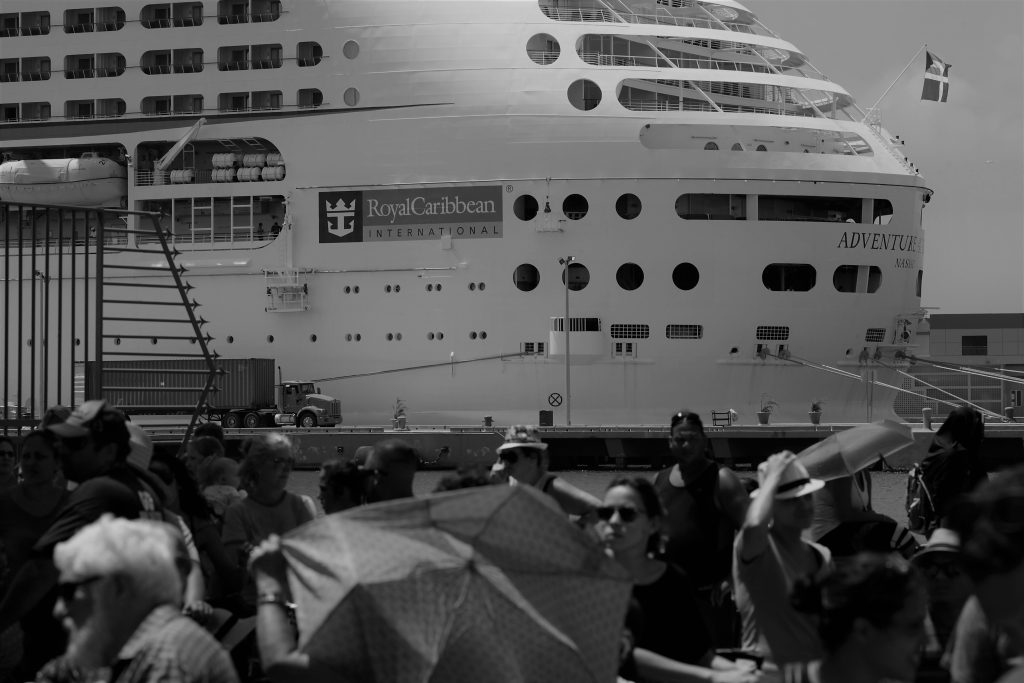Thousands of people lined up at San Juan harbor on Thursday to board a cruise ship that will take them from Puerto Rico to the U.S. mainland in one of the largest evacuations since Hurricane Maria slammed Puerto Rico more than a week ago.
Maria, which came ashore as the strongest storm to hit the island in nearly 90 years, has created a humanitarian crisis. The powerful storm knocked out the nation’s electric grid and has crippled communications networks, transport and the water supply for the territory’s 3.4 million people.
The devastation is likely to feed an exodus that has driven tens of thousands of Puerto Ricans from the economically struggling island in recent years in search of opportunity on the mainland.
“I’m sorry to be leaving Puerto Rico, but I have to. I prefer home, but it’s impossible with these conditions,” said Ada Reyes, 85. She was in a wheelchair and traveling on the Royal Caribbean cruise ship bound for Florida with her granddaughter, Maria Fernanda, 19.
Fernanda planned to drop her grandmother in Florida, then head to Boston to look into colleges. A second-year student at the University of Puerto Rico, the teenager did not know when classes there would resume.
Royal Caribbean International said its Adventure of the Seas cruise ship will carry 3,800 passengers from Puerto Rico and the U.S. Virgin Islands. A company spokesman said the cruise line is providing the passages free of charge and that travelers were registered with the help of local officials.
The ship will make humanitarian calls in the hurricane-hit U.S. Virgin Islands, where it will drop off supplies. It will then head to Fort Lauderdale, Florida, with a planned arrival of October 3.
The cruise line said it will work with airlines to make travel arrangements for passengers looking to meet up with friends and family on the mainland.
“This is a humanitarian mission on behalf of Royal Caribbean,” company spokesman Owen Torres said.
At San Juan’s main airport, flights are slowly returning. Major carriers including Southwest and JetBlue are still operating at reduced schedules as the airport works to restore power and return to full staffing levels.
JetBlue typically has about 40 flights a day to Puerto Rico but on Thursday it had only seven, which it said was still more than any other airline flying to the U.S. territory.
ONE WAY OR ROUND TRIP?
People have waited for days for a flight out, with some Puerto Ricans wondering if they will stay once they reach the U.S. mainland.
Lilliana Pastor, 34, of San Juan, decided on Tuesday to buy a one-way ticket to Florida for her and her 7-year-old daughter, Leah Aguayo.
“Right now we don’t know about the electricity. We don’t have running water,” Pastor said. “I’d rather go to Miami where we have family and see what happens.”
As U.S. citizens, Puerto Ricans can easily move to the United States. Migration to the mainland has soared in recent years, fueled by Puerto Ricans’ desire for economic stability, jobs, schools and access to medical care.
Between April 2010 and July 2016, the population of Puerto Rico dropped by 8.4 percent, the U.S. Census said, the largest percentage drop of any U.S. state or territory.
Nearly one-third of those born in Puerto Rico now live on the U.S. mainland, economists wrote in a research report published on a blog site run by the Federal Reserve Bank of New York.
The migrants are mostly younger workers, tilted toward the lower end of the skills and earnings spectrum. The loss of these taxpayers is a blow to the island’s already reeling economy, the economists wrote in an August 2016 post for Liberty Street Economics.
Puerto Rico, which earlier this year filed the biggest bankruptcy in U.S. municipal history, is struggling to regain economic stability in the face of a $72 billion debt load and near-insolvent public health and pension systems.
ECONOMIC DETERIORATION
The out-migration has accelerated the aging of Puerto Rico’s remaining population, further straining government services, the economists said.
“If people continue to leave the island at the pace that has been set in recent years, the economic potential of Puerto Rico will only continue to deteriorate,” their research said.
Back at San Juan’s port, Lara Brown, 42, who runs a child care center, was fighting back tears. She was sending her son, 14, and daughter, 12, to Miami to live with her sister-in-law, where she says life for them will be easier.
“They have no electricity. Sometimes they have water, sometimes they don’t,” Brown said. “I’m afraid to leave them at home alone.”






